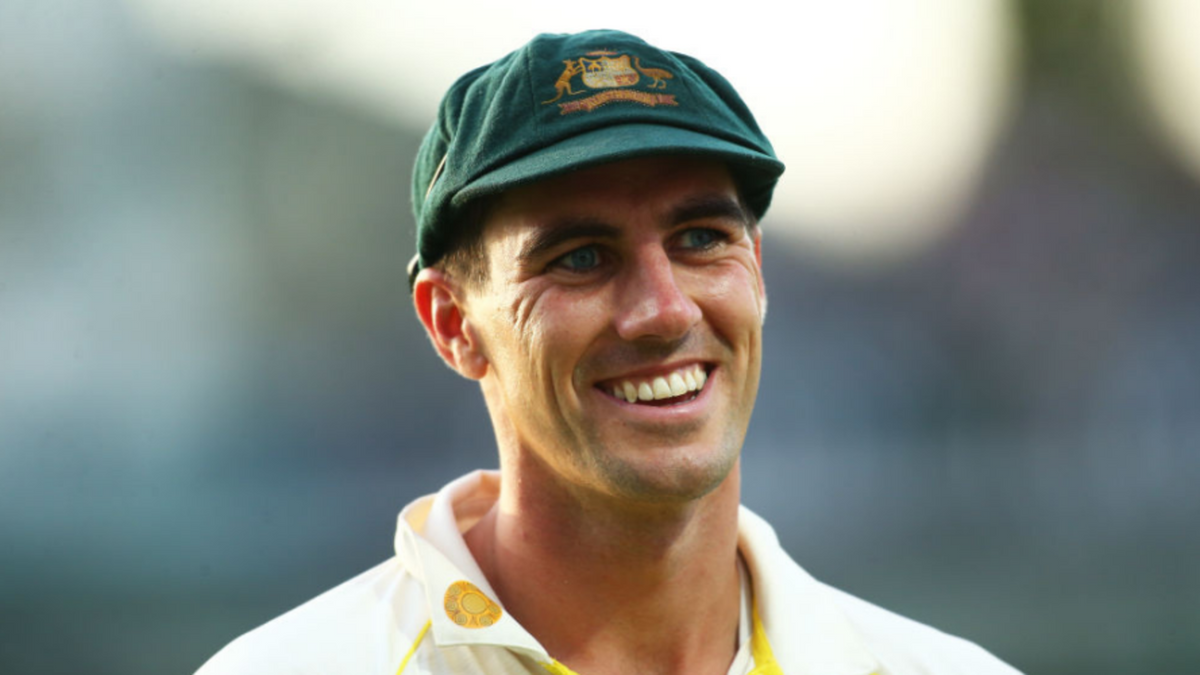
As Australian cricket finds itself in the middle of a captaincy crisis yet again, they couldn’t have found a better man to take the charge than Pat Cummins, writes Divy Tripathi.
Sign up to bet365 to be entered into a draw for the chance to win a Wisden t-shirt of your choice, terms and conditions apply, more information here 18+ begambleaware.org
One of the landmark features of the legendary Australia side from the noughties was the presence of players who show fight when the team needed it the most. Take the 2006 Perth Test, better remembered for the Adam Gilchrist blitzkrieg. England got hold of the game in the second innings, Ian Bell and Alastair Cook getting stuck in as Australia were denied for 56 overs. Against lesser line-ups they might have dreamt of bringing to life the Geoffrey Boycott dictum of ‘batting on and on’, until they ran the opposition out of the game. But things were different here, as Australia possessed the famous bowling duo of Shane Warne and Glenn McGrath. Warne got rid of Bell, while McGrath would later take care of the stubborn Cook. Despite the fight, England lost the game by a margin of 206 runs.
There are many more milestones he needs to cover before he’s regarded as a player in the same breath, but it wouldn’t be wrong to say that Pat Cummins is built in a similar mould. There has been plenty of chatter about whether he can juggle the dual responsibilities of captaining and being a frontline bowler. But really, Cummins has been a leader ever since he began.
Almost a decade back he debuted like a fighter, saving Australia the ignominy of a whitewash in South Africa. He took seven wickets in the game, and then stuck together with Mitchell Johnson to carry his side across the line, hitting the winning runs as a 19-year-old. Alas, soon after a series of debilitating injuries put his young career into jeopardy.
Ever the fighter, Cummins returned – first to the limited overs setup and eventually into the Test line-up. And once back, it felt like he had never left. He had even been battling for the Australian cause while sitting on the sidelines, but was able to deliver in a clearer capacity when back in the baggy green. He picked up wickets on the flattest of decks in Asia, and then shone in the home summer against the old enemy, being the leading wicket-taker in Ashes 2017-18. However, the world saw the best of Cummins when Australia were at their lowest.
This can be best illustrated through his 9-141 in the crushing Johannesburg defeat that followed the Cape Town fiasco. And this effort was merely a signal of things to come. He became the flag-bearer of the Australian fighting spirit over the next few months.
When Virat Kohli’s India came with ambitions to conquer their final frontier, Cummins was among the first to signal that Australia would not be giving up without a fight. He picked 14 wickets in the 2018/19 Border Gavaskar trophy, and scored 163 runs against a challenging bowling line-up. His efforts didn’t go unrewarded, and he was made the joint vice-captain of the Australia team in 2019.
His stocks rose further when he was the leading wicket-taker in the successful 2019 Ashes campaign, claiming 29 wickets from five Tests, relentlessly churning out overs even as other quicks were rotated around him.
While there maybe a few objections to a fast bowler, especially one with the injury history of Cummins being made the Australia captain, not much else could have been done in the present circumstances. There’s been the Tim Paine exit, and keeping the history in mind Steve Smith hasn’t been given the captaincy just yet, although he’s central to the way the side functions.
The Australia team needs someone who can lead from the front, and also inspire them in this troubled hour – when its reputation is at stake yet again. Cummins’ appointment is merited not only based on his performances and membership of the team’s core leadership group, but also as someone who was the team’s firefighter when it was going through its darkest phase.







